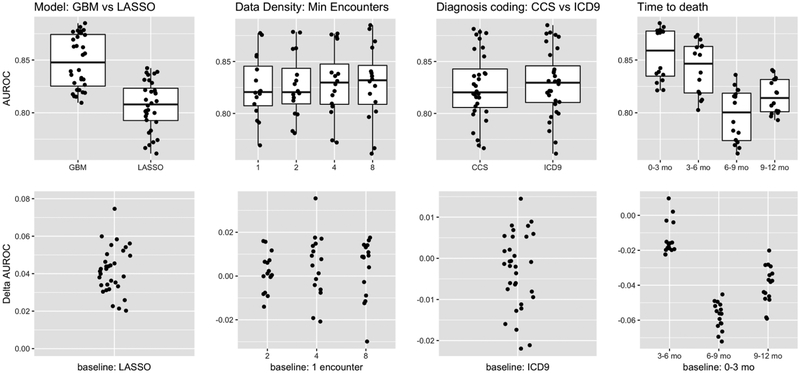Figure 3.
Performance measured by AUROC, which emphasizes ability to discriminate between positive (patients who died within one year) and negative cases (all others). Our experiments manipulated three factors -- model type (GBM = gradient boosted model; LASSO = L1 regularized logistic regression), data density (minimum number of encounters during the observation period), and coding of the diagnoses (CCS vs ICD codes). The first three columns compare performance as one factor at a time is varied, with the performance across all other settings of the other factors shown. The fourth column shows the subgroup analysis evaluating model performance in various intervals. The top row plots shows the absolute AUROCs, whereas the plots below show the change in AUROC relative to the indicated baseline on the x-axis. These results show that: a) There is substantial, consistent benefit to modeling interactions and non-linearities, b) There is no consistent benefit in discrimination ability by imposing data density requirements, c) There is no benefit to aggregating diagnosis codes from ICD to CCS, and d) As expected it is more difficult to discern positive cases who die further in the future.

